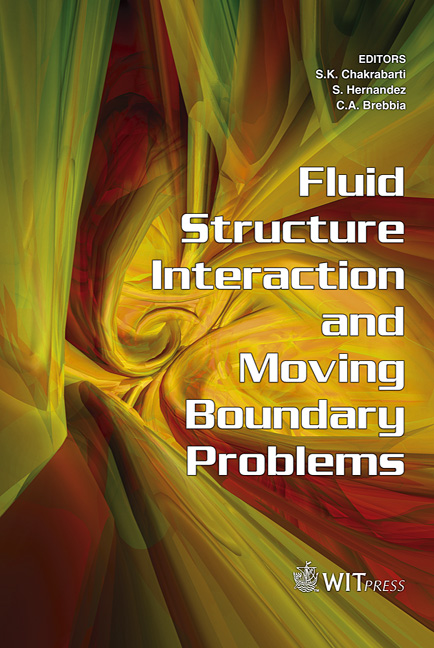Time-domain Analysis Of The Hydroelastic Response Of Cavitating Propulsors
Price
Free (open access)
Transaction
Volume
84
Pages
13
Published
2005
Size
2,838 kb
Paper DOI
10.2495/FSI050061
Copyright
WIT Press
Author(s)
Y. L. Young
Abstract
A 3-D boundary element method (BEM) is coupled with a 3-D finite element method (FEM) to model the hydroelastic response of cavitating propulsors. The BEM is applied to evaluate the moving cavity boundaries and hydrodynamic forces, as well as the added mass and hydrodynamic damping matrices. The FEM is applied to evaluate the dynamic blade stresses and deformations. The effects of fluid-structure interaction are included by superimposing the added mass and hydrodynamic damping matrices to the material mass and damping matrices in the equilibrium equation of motion. The problem is solved in the time-domain using an implicit time integration scheme. An overview of the formulation is presented along with numerical and experiment validation studies. The effects of fluid-structure interaction and cavitation on the propeller performance are discussed. Keywords: fluid-structure interaction, hydroelastic, cavitation, propeller. 1 Introduction Since the pioneering works of [1, 2, 3, 4], boundary element methods (BEMs) have been widely used for the analysis of complex flows around propellers. Most recently, a perturbation potential-based BEM developed by [2, 3, 5, 6, 7] has been further extended to predict unsteady cavitating and ventilated flows for conventional fully submerged propellers [8, 9], supercavitating propellers [10, 11, 12], and surface-piercing propellers [11, 13]. For cases without blade vibration, the developed BEM has been shown to predict forces and cavitation patterns that compared well with experimental measurements. However, hydroelastic effects become important for non-conventional propeller geometries (e.g. highly skewed
Keywords
fluid-structure interaction, hydroelastic, cavitation, propeller.





